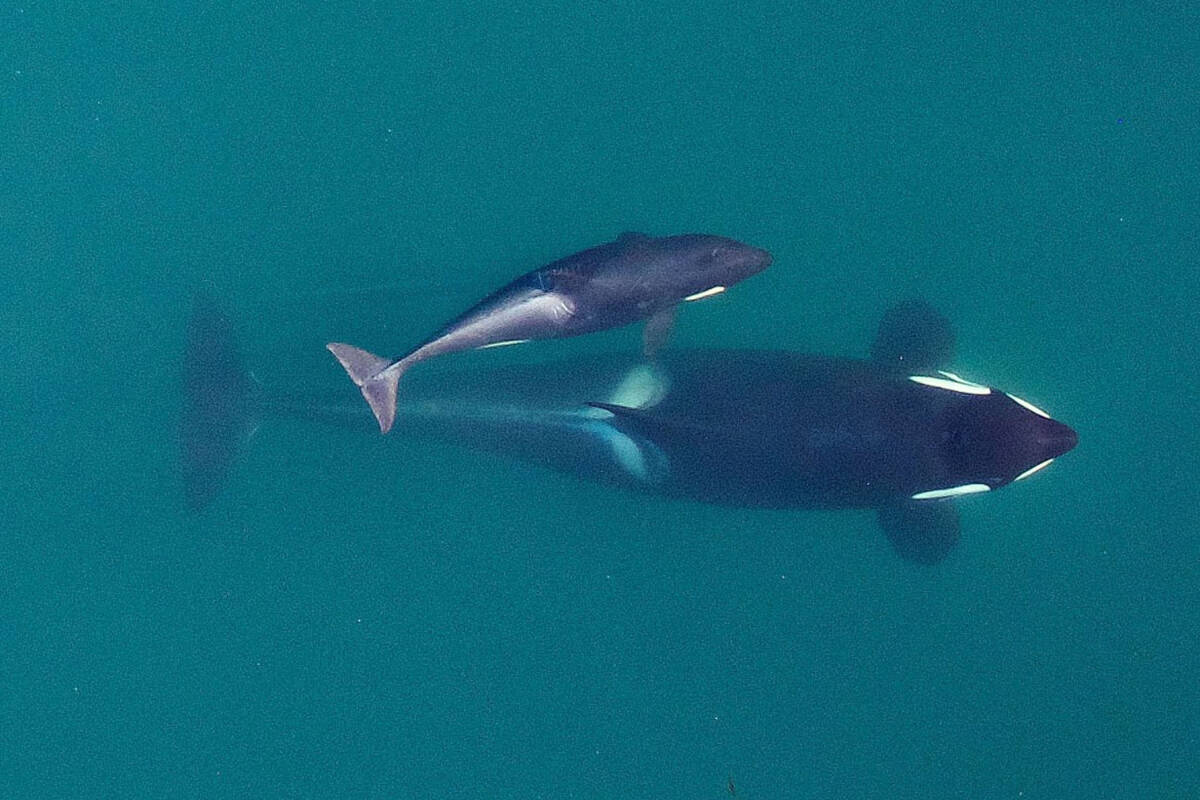Contaminants found in oil spills, wildfire smoke and traffic pollution are making their way into the skeletons and livers of two B.C. killer whale populations, according to a new study.
In a first in Canada, University of British Columbia researchers tested the beached carcasses of 14 Bigg’s and southern resident killer whales in search of polycyclic aromatic hydrocarbons (PAHs). The impact of the class of chemicals is still being analyzed, but study authors said PAHs are widely regarded as a serious concern for marine environments.
Existing research suggests PAHs have carcinogenic, mutagenic, immunosuppressant and toxic effects, and can disrupt the endocrine systems of marine mammals.
Some PAHs occur naturally in the ocean, but many are the direct result of human activity. Main contributors of the chemicals, according to researchers, are oil spills, shipping discharge, wildfire smoke, traffic pollution and the burning of coal, oil and wood.
They tested for 76 PAHs in the killer whales and detected 38 of the chemicals in at least half of the samples. They also found evidence of the chemicals being transferred from mother whales to their babies during pregnancy.
The authors compared their results to two similar studies and found the level of PAHs in their findings were lower than that found in cetaceans in the Gulf of California, but twice as high as that detected in captive killer whales originating from Icelandic waters.
They also noted some differences in which PAHs were present in Bigg’s killer whales compared to southern resident ones. This, the authors said, was likely the result of different habitats, feeding preferences, metabolism and food web composition. For instance, Bigg’s killer whales swim in broader outer-coastal and inshore regions and feed largely on mammals, while southern resident killer whales frequent more coastal and inshore areas and feed on salmon.
The researchers said more work should be done to flesh out their findings beyond the 14 whales they studied, but said their study should be a strong indication that human activity is impacting the ocean’s top predators.
“Pollution risk management and assessments, along with pollutant source control programs, are paramount to the protection and conservation of this species,” they wrote.
Southern resident killer whales are classified as endangered under Canada’s Species at Risk Act, while Bigg’s whales are considered threatened.
READ ALSO: Toxin pockets along B.C. coast raising red flags for salmon and orcas

